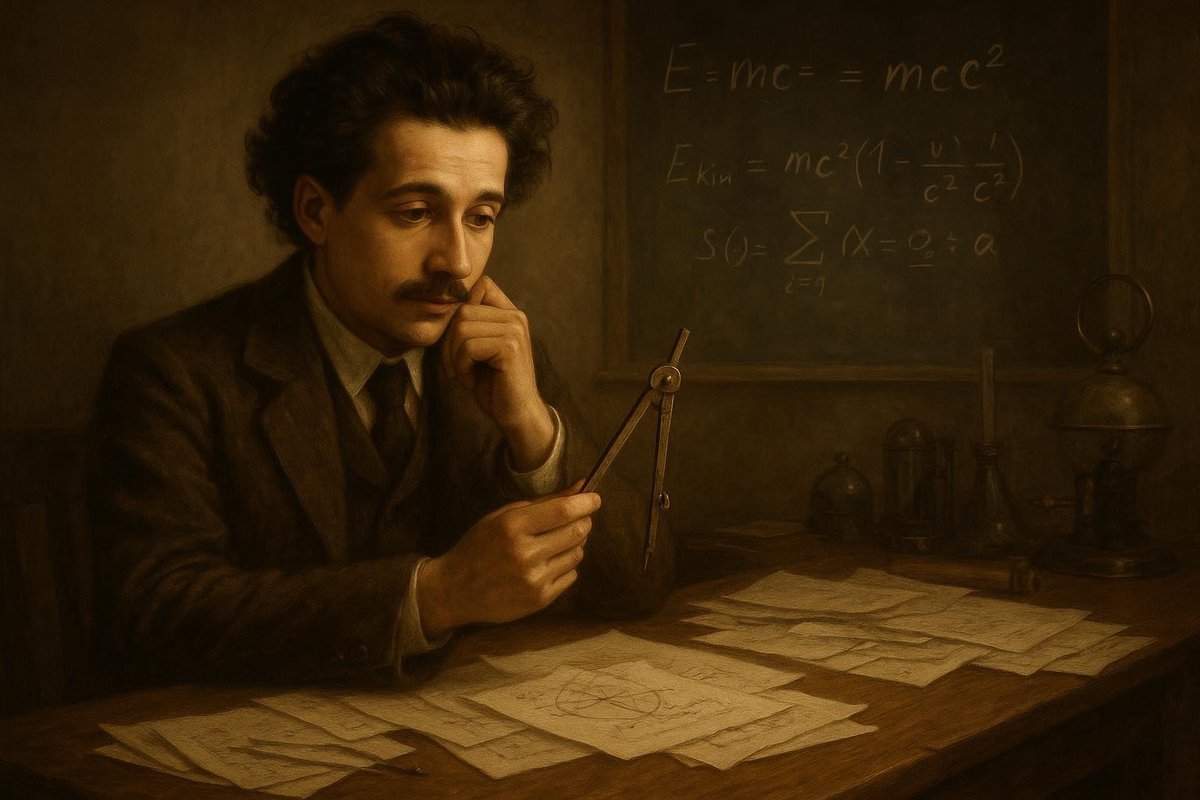
The Seeds of Imagination: Early Influences
It was a modest household in Ulm, Germany, in 1879 where Albert Einstein was born. Despite the ordinary surroundings, young Albert’s mind was anything but conventional. His curiosity was sparked early by a simple compass handed to him by his father—a moment he would later describe as magical. As the needle mysteriously swung north, something within young Einstein awoke. ‘Something deeply hidden had to be behind things,’ he mused, setting the stage for his life’s work.
- Born in Ulm, Germany, 1879.
- Inspired by a compass at a young age.
- Studied physics and mathematics in Zurich.
In an era when rigid educational structures dominated, Einstein’s unconventional approach to learning stood out. While many of his peers memorized facts, young Albert indulged in questioning the very nature of those facts. Switzerland became his intellectual sanctuary, a place where he was free to think deeply and creatively. His choice of Zurich’s Polytechnic School wasn’t just a step in his education; it was his first foray into a world that dared to explore beyond the known.
The Art of Thought: Mental Models and Imagination
Einstein often claimed, ‘Imagination is more important than knowledge.’ His legacy is largely due to his remarkable ability to imagine the unseen. It was in these mental playgrounds that he conducted his legendary thought experiments. Picture this: a young Einstein riding alongside a beam of light, pondering what he might see. Such vivid scenarios allowed him to transcend the limitations of his time’s scientific tools.
- Developed thought experiments as a tool for discovery.
- Famous thought experiment: riding a light beam.
- Prioritized imagination over knowledge.
These mental models were not mere flights of fancy; they were structured, methodical, and deeply analytical. Einstein used them to unravel the mysteries of time, space, and gravity, eventually leading to the revolutionary theory of relativity. His mental exercises blurred the lines between reality and possibility, inviting the scientific community to reconsider the very fabric of the universe.
Overcoming Hurdles: Challenges and Resilience
Einstein’s journey was far from smooth. He faced skepticism from academia and struggled with employment, at one point working at the Swiss Patent Office. Yet, these setbacks fueled his determination. Imagine the irony: while evaluating patents, Einstein quietly pondered the laws of the cosmos.
- Faced skepticism in academia.
- Worked at the Swiss Patent Office.
- Continued research despite challenges.
Einstein’s resilience was rooted in his relentless pursuit of understanding, unperturbed by his critics. His 1905 papers, often called the Annus Mirabilis papers, were not just scientific documents—they were declarations of a new era in physics. Despite the challenges, his unwavering faith in his mental models eventually led to the Nobel Prize in 1921, forever changing the landscape of scientific inquiry.
Enduring Impact: Legacy of Imagination
Einstein’s legacy is more than the sum of his theories; it’s a testament to the power of imagination in science. His work laid the groundwork for quantum mechanics and even the development of technologies such as GPS. More importantly, he inspired generations to dream big, to question norms, and to imagine the impossible.
- Laid groundwork for quantum mechanics.
- Influenced technologies like GPS.
- Inspired future generations of scientists.
Einstein’s story is a reminder that the most profound discoveries arise not from perfect conditions but from imperfect, relentless exploration. His ability to see beyond the visible and reimagine the universe continues to fuel scientific curiosity and innovation today.
Fuel Someone Else’s Curiosity
As you delve into the story of Einstein, consider sharing his legacy with others. Talk about how his imaginative process can inspire new ways of thinking in any field. Encourage discussions that foster curiosity and challenge conventional boundaries. After all, the universe’s secrets remain, waiting for the next mind willing to explore them.
Whether you’re an aspiring physicist or simply someone who appreciates the wonders of the universe, Einstein’s journey illustrates that imagination is a powerful tool for discovery.

Leave a Reply